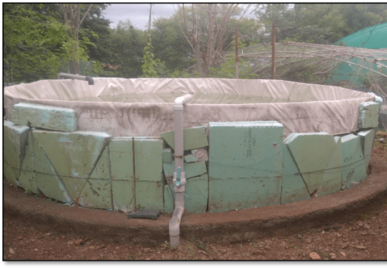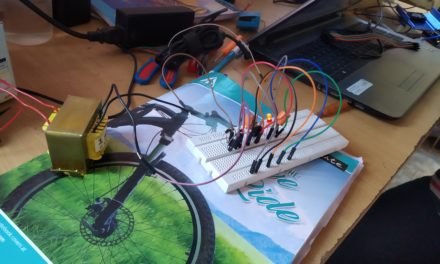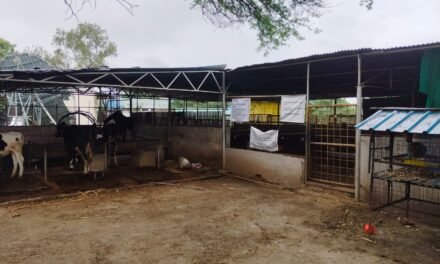22/07/2022
Biofloc Technology
Introduction:
Biofloc Technology (BFT) is considered as new “blue revolution” since nutrients can be continuously recycled and reused in the culture medium, benefited by the minimum or zero-water exchange. BFT is an environment friendly aquaculture technique based on in-situ microorganism production. Bio floc is the suspended growth in ponds/tanks which is the aggregates of living and dead particulate organic matter, phytoplankton, bacteria and grazers of the bacteria.

Advantages:
- Eco-friendly culture system
- It reduces environmental impact.
- Judicial use of land and water
- Limited or zero water exchange system
- Higher productivity (It enhances survival rate, growth performance, better feed conversion in the culture systems of fish).
- Higher biosecurity.
- Reduces water pollution and mitigate the risk of introduction and spread of pathogens
- It reduces utilization of protein rich feed and cost of standard feed
- It reduces the pressure on capture fisheries i.e., use of cheaper food fish and trash fish for fish feed formulation.
Composition and Nutrients value of Biofloc:
Biofloc is a heterogeneous aggregate of suspended particles and variety of microorganisms associated with extracellular polymeric substances. It is composed of microorganisms such as bacteria, algae, fungi, invertebrates and detritus, etc. It is a protein rich live feed formed as a result of conversion of unused feed and excreta into a natural food in a culture system on exposure to sunlight and vigorous aeration.A good nutritional value is found in Biofloc.
Initial Steps for Biofloc Technology :

23/07/2022
Calculate the volume water in circular tank
we have taken readings by using measuring tape. We have taken average height value due to slope is not equal.

Calculations
H1 = 0.56 m D = 3.8 m
H2 = 0.62 m r =1.9 m
H3 = 0.675 m
H4 = 0.64 m
H5 = 0.65 m
Average Height = H1+H2+H3+H4+H5/ 5
= 0.56 +0.62+0.675+0.64+0.65/5
H = 0.629
V = Πr2h = 3.14×1.9×1.9×0.629
= 7 m3
Converting m3 to litre
V = 7×1000
V = 7000 L
25/07/2022
Take 7 kg jagary per 7000 L water and Dissolve in water. Then add jagary in biofloc tank. Added 3 Bubbler which provides oxygen to fishes. Also added 1 L culture in tank and check bubbler system and operating Biofloc system.

26/07/2022

calculated total number of fishes and total weight of fishes ( koi). Then fishes kept in biofloc tank. operated bubbler system.
Calculations
Total No of fishes = 102
Total Weight of Fishes = 6 kg
27/07/2022
Technical Specifications:
| Sr. No | Component | Details |
| 1) | Area for tank | 11.335 m2 |
| 2) | Biofloc Tank size | H = 0.629, D = 3.8 m, r = 1.9 m |
| 3) | Water holding capacity of each tank | 10,000 Litres capacity |
| 4) | Water quality parameters | TDS – 175 |
| 5) | Tanks Made-up of | HDPE |
| 6) | Total no Fishes | 102 |
| 7) | Species cultured | Anabas/Koi (Anabas testudineus) |
| 8) | Survival (%) | 80 |
| 9) | Type of feed to be used | Pallet feed |
| 10) | Size/weight of the species(gm) | 9.869 kg |
3/08/2022 to 7/08/2022
We gave pellet feed 500-gram daily fed to fishes for growth of fishes and healthy lives

10/08/2022
1) Measured floc in biofloc tank by using Imhoff cone
2) Steps to measured floc
- Fill bio floc water up to 1000 ml in Imhoff cone
- Attached cone with stand for measuring floc
- Kept it for 15 minute and floc will downward of Imhoff cone
- Measured it

3) Reading of floc is 5.5 ml
4) About C:N ratio: C: N is a process of controlling the amount of nitrogen in water most popular CN ratios are 10:1 and 15:1, which means in CN ratio 10:1 we need 10 carbon sources to kill 1 nitrogen. The CN ratio calculation is based on Fish Feed protein percentage.
12/08/2022 to 20/08/2022
Gave pellet feed to fishes in biofloc tank and also calculated CN ratio
Calculations:
For 1 kg feed with 20% protein
1kg feed with 200-gram protein
16 % of protein is nitrogen – 32-gram nitrogen per day
75 % feed nitrogen is wasted – 24-gram nitrogen
N is 24 grams then carbon is 24 ×10 =240
C: N is 240:24
For 1 kg feed we can add 40 % carbohydrates (carbon). we give jagary as carbohydrate in that 38 % carbon is present.
So, we gave carbohydrates on the basis of C:N ratio. We give jagary as carbon to fishes.in jagary 38% carbon is present
=100/38 =2.63
= 240× 2.63 = 631 gram carbon we give every day
23/08/2022 to 26/08/2022
| Date | Pellet feed in gram | Carbohydrates (jagary)in gram |
| 23/08/2022 | 240 | 631 |
| 24/08/2022 | 240 | 631 |
| 25/08/2022 | 240 | 631 |
| 26/08/2022 | 240 | 631 |
26/08/2022
Reset up biofloc tank
Cleaned area of biofloc tank and also removed unwanted plant and grass
27/08/2022
Reset up of biofloc tank for video recording. The purpose of video recording is to shoot information about biofloc tank and their measurements and how to install biofloc tank. The reason behind video recording is to helps farms who interested in biofloc fish farming to get reference installation of fish tank
1) Removed current setup of biofloc
2) Firstly, removed water from tank and also removed fishes from water by using net
3)/ Measured weight of fishes and transferred into small tank
4) Removed mesh and plastic of biofloc tank
5) While removing complete setup of biofloc measured diameter of circular tank and again started to set up biofloc tank
6) finally reset up biofloc tank


29/08/2022
we removed fist water from small tank with the help of bucket then Removed fishes from small tank and transferred into biofloc after setuping biofloc setup . Also calculated no fishes then we transferred into biofloc tank.

30/08/2022
Calculated C:N ratio
For 6.5 kg fishes
We feed 1% means 650 grams
650-gram feed with 20% Protein
650 grams feed with 130-gram protein
75 % feed wasted in biofloc tank – 97.5 gram
16% of protein is nitrogen – 15.6 N
Therefore,
C: N is 156: 15.6
So, we gave carbohydrates on the basis of C:N ratio. We give jagary as carbon to fishes.in jagary 38% carbon is present
=100/38 =2.63
= 156 × 2.63 = 410-gram carbon we give every day
1) Fed 650-gram pellet feed and 410-gram jaggery as carbon source ( 38 %carbon present)
2) we also started to feed wheat straw as carbon (30%) for biofloc. wheat straw dissolved in water then gave to fishes
First two day days gave jagary as carbon source and remaining day we started to give wheat straw because which is available cheap as comparative jagary and it contains 30 % carbon..before giving wheat straw first we dissolved in early day of feeding. We fed carbon source as per calculation of CN ratio
Started to fed pellet feed and carbon to fishes daily as follows:
| Date | Pellet feed in gram | Jaggery / wheat straw in gram |
| 30/08/2022 | 650 | 410 (jaggery) |
| 31/08/2022 | 650 | 410 |
| 01/09/2022 | 650 | 519 (wheat straw) |
| 02/09/2022 | 650 | 519 |
| 03/09/2022 | 650 | 519 |
| 04/09/2022 | 650 | 519 |
| 05/09/2022 | 650 | 519 |
| 06/09/2022 | 650 | 519 |
| 07/09/2022 | 650 | 519 |
| 08/09/2022 | 650 | 519 |
| 09/09/2022 | 650 | 519 |
| 10/09/2022 | 650 | 519 |
02/09/2022
We closed biofloc tank by using black paper due to avoid algae in biofloc.

6/09/2022
After 8 days feeding fish we measured floc by using Imhoff cone. Firstly, we filled biofloc water in Imhoff cone, adjusted cone with stand and kept it for 15 min for collecting floc.

Reading:
Floc – 6 ml
8/09/2022

We removed this black paper due heavy rain water stored on paper and damaged.
Again continued to pellet feed for fishes .
12/09/2022
Measured floc of bio floc tank by using Imhoff cone.
Reading:
Floc = 9 ml
Comparatively this time floc is increased.
| Date | Pellet feed in gram |
| 8/09/2022 | 650 |
| 9/09/2022 | 650 |
| 10/09/2022 | 650 |
| 12/09/2022 | 650 |
| 13/09/2022 | 650 |
| 14/09/2022 | 650 |
| 15/09/2022 | 650 |
| 16/09/2022 | 650 |
| 17/09/2022 | 650 |
19/09/2022
Started new fish feed to fishes which as shown fig and Proximate composition of that fish feed as given below

| Parameter’s | Value |
| Crude protein (min%) | 20 |
| Crude Fat (min %) | 3 |
| Crude fiber (max 5) | 9 |
| Mixture | 11 |
| Pellet size | 4 mm |
| No | Date | Fish feed in gram |
| 1 | 19/09/2022 | 650 |
| 2 | 20/09/2022 | 650 |
| 3 | 21/09/2022 | 650 |
| 4 | 22/09/2022 | 650 |
| 5 | 23/069/2022 | 650 |
| 6 | 24/09/2022 | 650 |
| 7 | 25/09/2022 | – |
| 8 | 26/09/2022 | 650 |
| 9 | 27/09/2022 | 650 |
| 10 | 28/09/2022 | 650 |
| 11 | 29/09/2022 | 650 |
| 12 | 30/09/2022 | 650 |
| 13 | 1/10/2022 | 650 |
| 14 | 2/10/2022 | – |
| 15 | 3/10/2022 | 650 |
6/10/2022 to 27/10/2022
Gave fish feed 650 gram in biofloc tank. exchanged water in biofloc.
2/11/2022
In biofloc tank fishes are died due to following reasons:
- Due to poor Oxygen supply
- water quality
- both ammonia and nitrate are toxic dramatically effect on fish
- Server weather.
all fishes are died Due to biofloc project stopped.
Conclusion:
- In this project I have learned that biofloc concept.
- Learned how to maintain biofloc technology.
- Also learned C:N ratio
- Learned that scope of biofloc
Suggestion:
Maintained biofloc in the following ways
- Be observant
- Provide proper aeration system
- Prevent algae and nuisance vegetation growth
- Conduct regular water quality tests.
- Acknowledge the unpredictability of nature
- Test a new tank regularly for nitrate and ammonium levels and change the water as needed to reduce levels so they are safe for fish.





